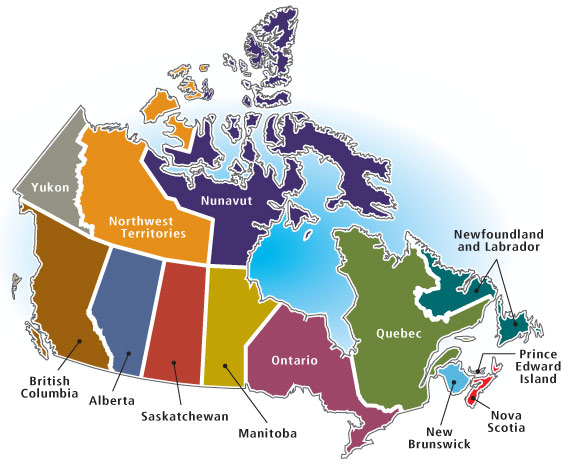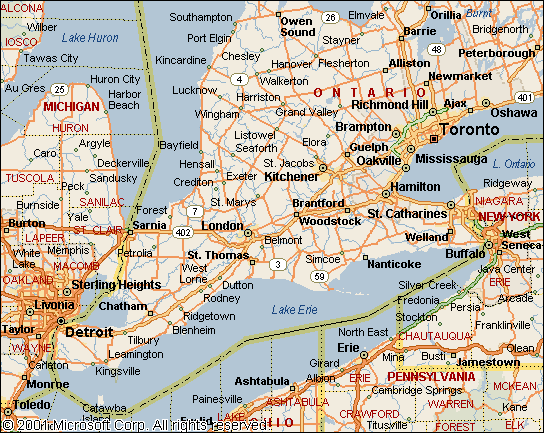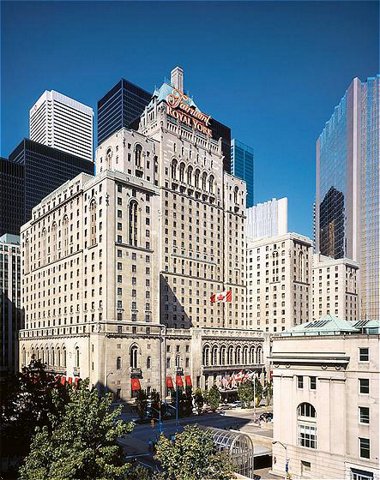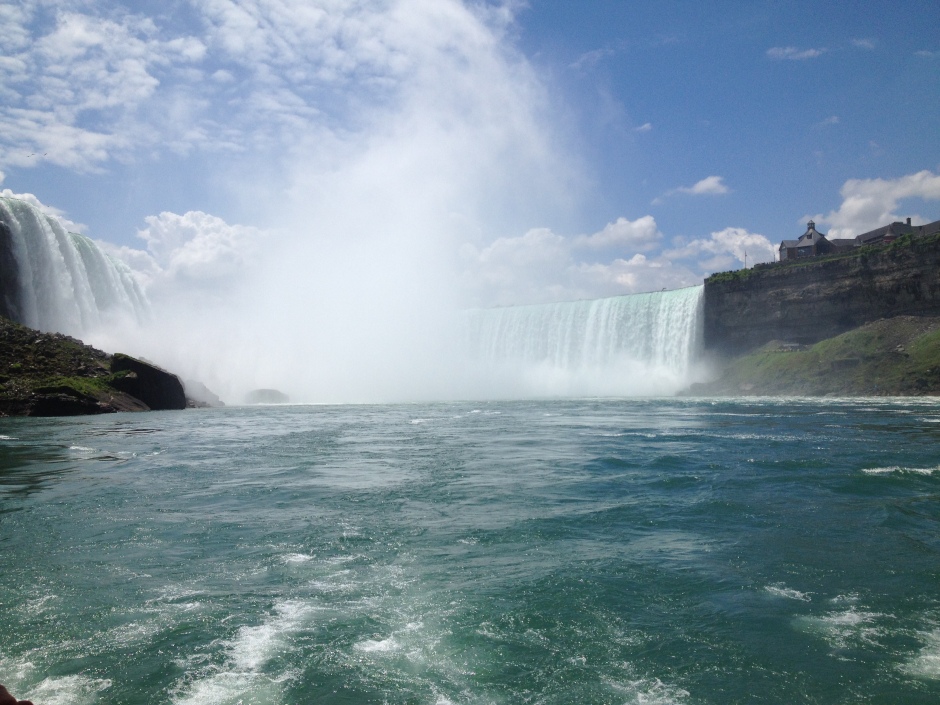I’ve heard it said that some provinces within Canada refer to Ontario as “On-terrible” and I want to set the record straight because that just isn’t right. I don’t want to point fingers, but nobody likes to be called names, British Columbia. And whilst sticks and stones and 10 feet of snow for 5 months of the year and horrendous thunderstorms and tornadoes might break our bones, your words are childish and unjustified. So there…
Having moved to Ontario only four years ago it still strikes me as odd to call anywhere other than England home, but now I do. Whilst I have done my best to explore as much of this enormous province during that time as possible, anywhere that has a land mass, according to Google, of 1, 076, 935 km² is going to take some time to conquer.

The entirety of the United Kingdom – England, Scotland (for the time being anyway, pending the 18th September Referendum), Wales and Northern Ireland – is a meagre 243, 610 km² and could therefore fit five times into this one Canadian province. You can understand how the size of this great country is overwhelming for us small-islanders.
It certainly took me some time to acclimatise to, and was one of the first remarks made by my parents when they came to visit last month. The journey from Toronto Pearson airport to Guelph doesn’t look far on a map but takes an hour, Toronto to Ottawa takes five hours etc. You get the point.
 So, with this is mind, we concentrated our efforts for their fortnight stay on the toe-end of the plump, Italy-like boot that is Ontario. There is plenty to see on our doorstep, even if it’s rather a large doorstep.
So, with this is mind, we concentrated our efforts for their fortnight stay on the toe-end of the plump, Italy-like boot that is Ontario. There is plenty to see on our doorstep, even if it’s rather a large doorstep.

Four hours to the north of Guelph at the very tip of the Bruce Peninsula is Tobermory (passed Owen Sound on the map above). Located at the point where Lake Huron and Georgian Bay meet, the small lake/bay-side community marks the northernmost reach of the 725km-long Niagara Escarpment and the finishing point of Canada’s oldest footpath, the Bruce Trail. The crystalline waters of Georgian Bay are the clearest I have seen anywhere in the world – other than perhaps Fiji; and you would be forgiven for thinking you had stumbled upon a pacific coastline, were it not for the fact that the water is glacially cold.
It is a haven for scuba-divers (with thick wet-suits) and kayakers, but we took the more leisurely option of a glass-bottomed boat tour. A short ride offshore from Tobermory’s marina is the Fathom Five National Marine Park – Canada’s first National Marine Conservation Area. Here you will find a total of 22 shipwrecks to explore and a stunning freshwater ecosystem. Our tour took us to a stop-off at the beautiful Flowerpot Island where walking trails allow you to explore and there is a campground for overnight stays.

Back on dry land, our next stop was the Bruce Peninsula National Park, a short way from the town, and the Cyprus Lake trail. The first half of the trail is a fair distance, but easy for walkers of any ambition and well worth the effort once you make it to the rocky cliffs that line the lake. Once again the chilling water is perfectly clear and will entice only the brave/foolhardy among us. A climb down to the grotto below is a must when visiting here. A slightly more challenging return route allows you to explore the rugged cedar forest.

The names of Tobermory and Bruce give a clue to the fairly heavy Scottish influence on this part of the world and next up was the town of Kincardine, located a few hours south-west on the Lake Huron shore. During the summertime, at 8pm each Saturday evening, the Kincardine Scottish Pipe Band march the length of Queen Street playing their bagpipes and drums to the delight of locals and tourists alike who join in a parade behind them. Given how far the town is from Scotland it is a unique, and rather surreal, experience but nonetheless a genuine one, which brought the suggestion of a tear to my otherwise stoical Glaswegian step-father’s eye.
You can finish your evening with a plate of quality fish and chips at the Erie Belle restaurant – named after the shipwreck of a Great Lake steamer which blew up in 1883 – and watch the sun go down over the lake. It’s all rather idyllic. Oh, and if you are spending the night I would recommend staying with Harry and Carolyn Helfenstein at ‘A Sleep In’ B & B. They are wonderful people, the conversation is engaging and the breakfast pancakes superb.
No visit to southern Ontario would be complete without a visit to the big city. If you are from Toronto (pronounced Ter-ah-nah) then it is the centre of the universe and the finest city known to mankind. Put on the map recently by the antics of its portly mayor, Torontonians live in hope that one day… Rob Ford will clean up his act and the Leafs will make the play-offs.
In any case, there is certainly enough to see and do to spend a week or more in the city but we treated ourselves to just the one night at the Fairmont Royal York. Opened in 1929, the prestigious, luxury hotel was built on Front Street, across the road from Union Station, by the Canadian Pacific Railway company. Given the price of rooms we won’t be making a habit of staying here but as a glamorous one-off it is quite the experience. Photos that line the walls of the foyer and mezzanine show VIPs and world leaders attending conferences and summits at the hotel from the 1930s until now. Highly distinguished company.
 A stones throw from the hotel is the most well-known landmark in Toronto – the CN Tower. The “CN” stands for Canadian National, the railway company responsible for its construction which was completed in 1976. Why these rail companies spent so much time building landmarks rather than developing public transport is baffling but I suppose they had their reasons…
A stones throw from the hotel is the most well-known landmark in Toronto – the CN Tower. The “CN” stands for Canadian National, the railway company responsible for its construction which was completed in 1976. Why these rail companies spent so much time building landmarks rather than developing public transport is baffling but I suppose they had their reasons…
To raise money for charities some climb the tower’s 1776 steps but on a normal day glass-fronted elevators race up the 147 floors in less than a minute. The observation deck gives panoramic views of the city, Lake Ontario and beyond from 1,122 feet up and brave visitors can test their nerves by walking across the glass floor whilst looking straight down to the ground below. Not for the faint of heart! Tickets are a little pricey but it certainly is something to tick off most people’s bucket lists and well worth it as a one-time experience.

Walking back in the other direction along Front St. East will bring you to Old Toronto. The Gooderham Building is a fine example of an early gridiron building and the 19th century architecture in this area contrasts the CBD’s high-rises to the west of Yonge Street, making you feel like you have come across a match older and smaller city.
You will also find the historic St. Lawrence Market here. The first structure on what became known as “Market Block” dates back as far as 1803. Since that date it has been destroyed by fire, demolished, rebuilt and renovated many times, having served a variety of roles – most significantly as Toronto’s first Town Hall. The history of the market is an intriguing one. What exists now is one of the world’s finest markets and is a must-see for any visit to Toronto.
By this stage you may well be feeling fairly thirsty and a short distance further along Front St. will bring you to the Distillery District where you can enjoy a cold Mill Street, or 5, and watch the world go by. Cheers.
I’ve learnt a few things since coming to Canada that Canucks are particularly proud of. One is that they generally dominate the world of international ice hockey and that they benefit from the loud-mouthed and loud-suited Don Cherry gracing their television screens every Saturday. Another is maple syrup. Thirdly is the fact that their side of Niagara Falls is better than America’s. If you’re Canadian and reading this, don’t pretend like you don’t agree with me.
However touristy it may be, Niagara Falls is another must-see for visitors to Ontario. The pictures below or any type of video that you have seen of the falls do not do it justice. The sound, the spray and the sheer size of the Horseshoe Falls on the Canadian side of the river is something to behold in person. And many do – 12 million people a year according to this site.

Other than paying for parking you can take all the time you want to take in the wonderful views for free. There’s a gift shop for purchasing the traditional tacky crap you don’t need and a visitor centre for information as well. The famous Maid of the Mist boat runs from the American side of the river, so we took The Hornblower right up close-and-personal to the falling torrent of water. The stylish red ponchos provided didn’t do a great deal to prevent us getting soaked but that is all part of the exhilarating experience.
Niagara Falls’ lesser-known little brother is Niagara-on-the-Lake – a picturesque town of boutique shops, cafés and theatres. The Shaw Festival is held here each year – in honour of Irish playwright George Bernard Shaw.
This area is also home to Ontario’s finest wine-growing region. The best way to explore is by bike. You can hop from one vineyard to the next, take samples at each stop, become increasingly merry and all the while delight in the million-dollar homes, perfectly kept gardens and views of the majestic Niagara River. A very good day out.
We started at the northern end of the Niagara Escarpment, ended at the south and covered a lot of ground in between. We may not have the Rockies or the Calgary Stampede, but that doesn’t mean that this province isn’t worth a visit. Try it for yourself and see!



